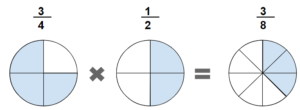- Acadally
- 0 Comments
- 2264 Views
Based on educational experience, it has become clear that identifying misconceptions in education is critical for creating effective learning environments and ensuring academic success. A “misconception” is an incorrect belief or understanding—a false idea or notion that contradicts facts or reality. Misconceptions in education hinder the learning process and impact individuals across disciplines. By examining the meaning and root causes of misconceptions, the blog aims to equip educators with a better understanding of various types of misconceptions.
What Are Misconceptions in Learning?
Learning, the intricate process of acquiring knowledge and skills, is often hindered by unseen obstacles — misconceptions. In the context of learning, misconceptions represent flawed understandings of concepts, principles, or processes that can hinder the acquisition of new knowledge and skills. These can arise from various sources, such as intuitive theories, prior knowledge, instructional practices, and sociocultural influences. As Claude Bernard aptly noted, ‘It is what we know already that often prevents us from learning.’ While seemingly harmless, misconceptions can significantly impact a learner’s progress, leading to persistent errors, frustration, and even disengagement. According to the research paper ‘The Impact of Student Misconceptions on Student Persistence in a MOOC’ by Chen Chen, Gerhard Sonnert, Philip M. Sadler, Dimitar Sasselov, Colin Fredericks, developmental psychologists have argued that preconceptions are either critical stepping stones or hurdles to formal learning. Erroneous and naive preconceptions, often termed misconceptions, are not simply wrong knowledge, but involve a “belief system comprised of logically linked sets of propositions” that hamper students’ deep understanding of scientific explanations. The term ‘cognitive conflict’ is defined as “a perceptual state in which one notices the discrepancy between one’s cognitive structure and the environment.” The roots of misconceptions are multifaceted, often stemming from theories we develop based on limited experiences. These misconceptions can manifest in various forms, from subject-specific misunderstandings in fields like science and mathematics to erroneous beliefs about the learning process. Therefore, identifying and addressing these misconceptions is crucial for promoting a clear and accurate understanding of various disciplines and facilitating effective learning.
The Spectrum of Misconceptions
To gain a deeper understanding of the prevalence and nature of misconceptions in learning, a study was conducted by a team of 5 people involving interactions with around 30 students from 3 prominent schools in Delhi NCR and Vadodara. The survey was a crucial tool in the research, providing valuable insights and paving the way for future educational strategies and interventions. It specifically focused on understanding key concepts in disciplines like Math and Science. In addition to the student survey, collaboration was made with 6 teachers from these schools. The key findings from the survey are categorized under relevant types of misconceptions and are referred to as primary sources. Any additional examples discovered from various studies conducted are considered secondary data. All these examples are classified into different types of misconceptions as follows:
Preconceived Notions
These are deeply ingrained ideas or beliefs that individuals hold before learning about a specific topic. They often stem from personal experiences, cultural influences, or exposure to misinformation. Example:
- Learners thought SI units were simply international and common units, needing to understand their standardized nature. (Source: Primary data)
- Learners believe that heavier objects will always fall faster than lighter ones. (Source: Primary data)
- Before learning about space, a learner might already believe that the Earth is the biggest planet in the solar system. (Source: Secondary data)
Non-Scientific Beliefs
These are beliefs that contradict established scientific principles and evidence. They often originate from folklore, religious doctrines, or pseudoscientific claims. Example:
- The belief that the Earth is flat, is contrary to the overwhelming scientific evidence that it is spherical. (Source: Primary data)
- In certain regions in India, if a black cat crosses the path, then taking that path should be avoided. It is also believed that somebody else should pass before crossing the path. (Source: Primary data)
- Attributing mystical properties to certain numbers (e.g., numerology). (Source: Secondary data)
Factual Misconceptions
These are misconceptions that involve incorrect or incomplete factual knowledge. These arise from gaps in knowledge, misinformation, or misinterpretations of facts. Example:
- Misconception that all sides of a rectangle are equal. (Source: Primary data)
- Confusion in identifying glass and mirrors. (Source: Primary data)
- Think that the measurement of length and distance is different, hence requiring different units (e.g., cm/mm for length and km/m for distance). (Source: Primary data)
Conceptual Understanding
These misconceptions involve a flawed understanding of underlying concepts or principles within a subject area. Example:
- Believing that a fraction of a whole does not require dividing the figure into equal parts. (Source: Primary data)

- Believing that in any triangle, the side opposite to the largest angle is the hypotenuse. (Source: Primary data)
- Believing that shadows are reflections of objects. (Source: Primary data)
- Rather than memorizing the dates of historical events such as factors leading to World War I, understanding the interconnected causes and effects. (Source: Secondary data)
Vernacular Misconceptions
These misconceptions arise from the everyday language used to describe scientific or mathematical phenomena, which may differ from the precise terminology used in these fields. Example:
- In some regions, the term “football” might refer to what others call soccer.
(Source: Secondary data) - The term “theory” means a guess or hunch, whereas in science it refers to a well-substantiated explanation. (Source: Secondary data)
Factors Due to Which Misconceptions Occur
Misconceptions in academic learning stem from a lack of clarity in fundamental concepts, incorrect information in educational resources, personal biases, and misinformation spread through social interactions. These factors can distort a learner’s understanding, making it crucial for educators to identify and address these misconceptions for effective learning. Here are some factors that lead to the occurrence of misconceptions.
Inadequate Prior Knowledge
Approaching a new topic with limited or incorrect prior knowledge can lead to significant misunderstandings. Learners often try to integrate new concepts into their existing mental model, which can result in errors if their foundational knowledge is flawed. Example: This student might struggle with the concept that multiplying by a fraction (such as 1/2) results in a smaller number, not a larger one. This misconception stems from an incomplete understanding of multiplication, where their prior knowledge does not include the effects of multiplying by numbers less than one.
Cultural and Personal Perspectives
Cultural and personal experiences significantly influence how students perceive and understand scientific concepts, often leading to misconceptions. These perspectives shape how information is processed and understood, with students’ backgrounds influencing their interpretations in varied ways. Example: The stereotype is that female drivers are not as good as male drivers. This stereotype is widespread despite numerous studies showing that gender does not determine driving skills.
Incomplete Mental Models
Mental models are simplified representations of how things work in the mind. They help us understand our surroundings, make decisions, and learn new things. However, these models can sometimes lack necessary information or contain incorrect ideas, leading to errors or confusion—these are incomplete mental models.
Incomplete models can cause misunderstandings, wrong assumptions, and errors in judgment or problem-solving. Example: Students often think that an object in motion requires a continuous force to keep moving, not fully understanding Newton’s First Law of Inertia, which states that an object will stay in motion unless acted upon by an external force.
Misleading Analogies and Visual Representations
Misleading analogies and visual representations are significant factors that contribute to the development of misconceptions in learning. Example: Diagrams showing fractions as parts of pizzas or pies can be helpful, but they might mislead students when it comes to multiplication. Students might think that multiplying fractions always makes the product larger because the visual suggests combining rather than intersecting parts.

Cognitive Biases and Overgeneralization
Cognitive processes involve thinking, understanding, learning, and remembering. Cognitive biases and overgeneralization can lead to misconceptions in learning. These are mental shortcuts that may cause errors. Example: “Adding numbers always results in a larger sum (5 + 3 = 8).” One might overgeneralize and believe this to be universally true. This initial belief can foster a misconception, stemming from an overly broad assumption that fails to account for all situations, like (– 2) + (– 3) = (– 5), where the sum – 5 is smaller than both – 2 and – 3.
Lack of Hands-On Experience
Misconceptions often arise from a lack of hands-on experience. While hands-on activities aim to connect theory with practice, students may wrongly assume that outcomes are universally applicable. This oversight ignores the complexity and variability of real-world situations, hindering a deeper understanding of concepts. Example: Some people may believe that watering plants excessively is beneficial for their growth. In reality, overwatering can lead to the death of the plant. This is because excess water can cause the roots to become waterlogged and oxygen-starved.
Language Used
Students faced difficulties when scientific words were used in everyday language. The language used by individuals may be responsible for students’ misconceptions (Boz, 2006; Osborne et al., 1983). Example: Students are memorizing the phrase “Two too-za four” for reciting multiplication tables without understanding its meaning. It’s important to clarify that “Two too-za four” actually means “Two twos are four,” which signifies that adding two twice results in four.
Teachers
Teachers can inadvertently pass on misconceptions to students due to their misunderstanding of abstract concepts or ineffective communication. According to the paper ‘Understanding Misconceptions: Teaching and Learning in Middle School Physical Science’ by Philip M. Sadler and Gerhard Sonnert “When teachers had low subject-matter knowledge or low knowledge of students’ misconceptions, gains in student achievement remained low.” Example: A teacher might explain that “solids have a definite shape while liquids take the shape of their container.” This could lead to the misconception that solids cannot change shape, which is not true as solids can be reshaped or deformed.
Textbooks
Textbooks are a tool used in the teaching-learning process and a guide for teachers and students. Textbooks have an important role in students’ construction of conceptual understanding. However, textbooks may also serve as a cause of misconceptions (Devetak, Vogrine, & Glazar, 2007; Gudyanga & Madambi, 2014). Example: Textbooks often show a “tongue map” with different regions for each taste (sweet, bitter, sour, salty). In reality, all tastes can be detected anywhere there are taste receptors all over the tongue. This “tongue map” can lead to misconceptions about how taste buds work.

Conclusion
In conclusion, misconceptions in learning can arise from various sources such as real-life experiences, textbook content, and teaching methods. Real-life experiences shape initial understandings, while textbooks can sometimes oversimplify or misrepresent concepts. Understanding these origins is crucial for devising strategies to mitigate these factors and help learners master the concepts.
For teachers, possessing subject matter knowledge is just the starting point. To effectively address student misconceptions, they need a broader set of skills and knowledge. It’s about understanding the learner’s perspective and using effective strategies to help them build accurate understandings, requiring a deeper understanding of both the subject matter and the science of learning.
Author –
Nikita Rawat and Krishan Kumar








